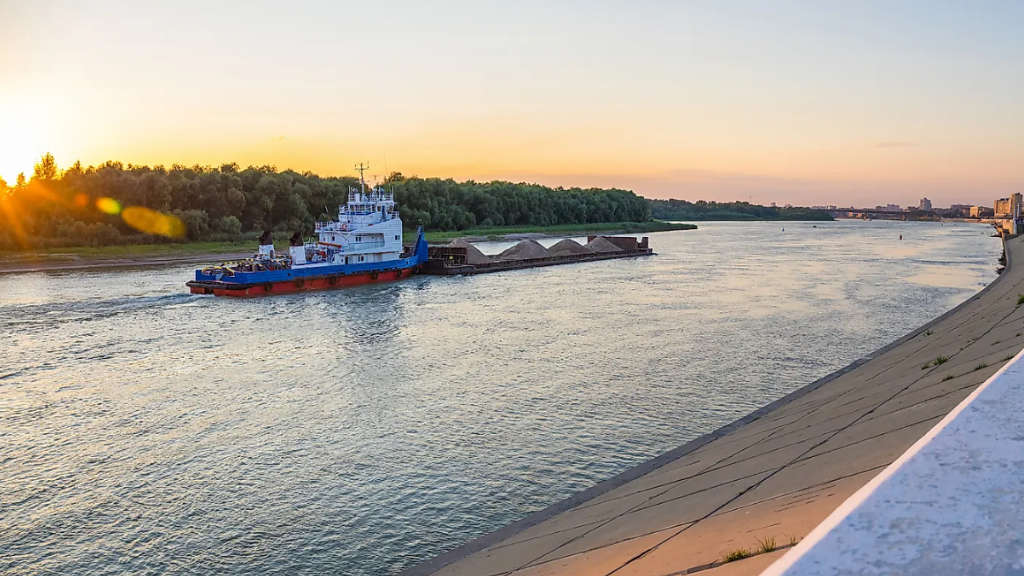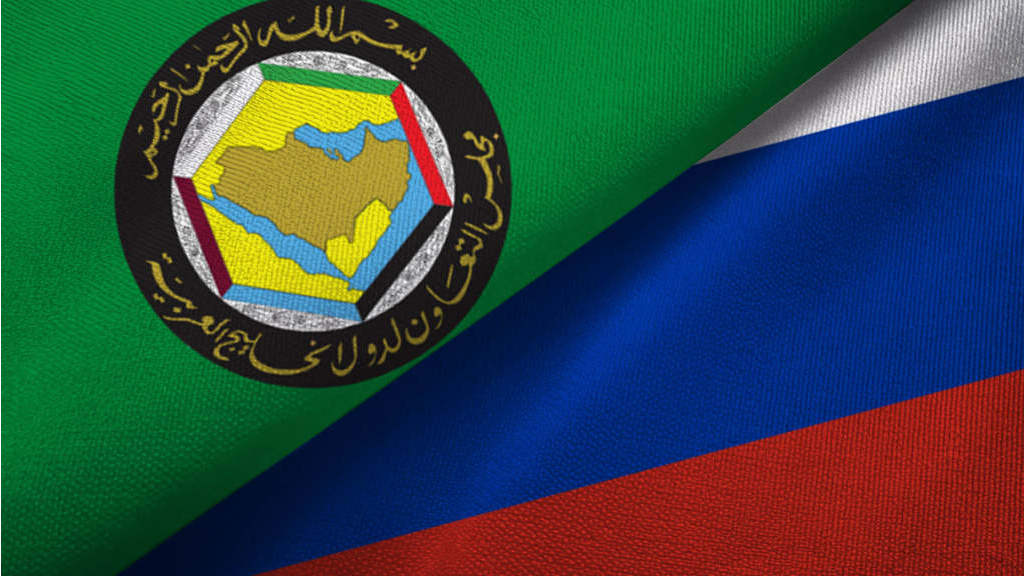The Irtysh River originates in the Xinjiang Province of China and flows north-west across Lake Zaisan in Kazakhstan, meeting the Ishim and Tobol Rivers before merging with the Ob River in Western Siberia. The total length of the Irtysh across China, Kazakhstan and Russia is 4,248 kilometres, and it is navigable for 3,784 kilometres, from the downstream end of the Ust-Kamenogorsk hydroelectric power station to its mouth in Khanty-Mansiysk, where it flows into the Ob. The Ob, in turn, flows through Western Siberia and discharges into the Ob Bay of the Kara Sea (Arctic Ocean basin).
In the Chinese section, part of the Irtysh is dammed to feed irrigated crops. The Kazakh section of the river has three large hydroelectric power plants and the world’s deepest sluice with a drop of 42 metres. The lock allows river transport to pass the dam at Ust-Kamenogorsk, the largest city in East Kazakhstan (population: 400,000). The Irtysh enters Russian territory at the border between Kazakhstan and Omsk Oblast. Omsk is the third largest city in Siberia with a population of 1.2 million and is of strategic importance as it is located on the Trans-Siberian railway and the river provides access to markets in Eastern Kazakhstan and Western China. From Omsk, the Irtysh flows northwards to flow into the Ob, on which the major Siberian cities of Barnaul, Novosibirsk, Nizhnevartovsk and Surgut are built. Novosibirsk, the largest city in Siberia (population: 1.6 million, third largest in Russia), is also located on the Trans-Siberian railway.

Russia’s President Putin spoke last week about the need to further develop Russian river connectivity with the Arctic Ocean and to invest in inland river ports and facilities. The River Irtysh is no exception, as Russian, Kazakh and Chinese officials have been planning the development of freight transportation along the Irtysh River.
Konstantin Zhulin, Deputy head of the Omsk Administration of the Ob-Irtysh Basin of Inland Waterways has said that such a step will reduce the cost of delivering goods, and relieve capacity loads on the Trans-Siberian railway, which is currently operating at close to full capacity.
Andrey Tarasenko, the head of Rosmorrechflot, the Russian Government Agency for Maritime and River Transport, has also recently said that the Agency was considering the possibility of delivering goods to China and Turkiye via the Irtysh River.
According to the estimates of the Ministry of Transport of Kazakhstan, the potential cargo volume on the river could reach 2.5 million tonnes per year.
Zhulin stated last week that a joint meeting is planned in Kazakhstan together with Russian and Chinese officials and engineers to discuss the Irtysh River development in order to create a unified concept. Dubbed the “One River, One Way” project, the intention is to allow the delivery of goods along the river from Russia to Kazakhstan and onto China. He said that “River transportation is much cheaper than by road. This also allows us to save highway and railway use, which are currently heavily loaded, and which sometimes leads to interruptions in goods delivery.”
According to him, Russia’s river logistics experts already have a thorough understanding of where shipments can take place, which fleet and which cargoes could be shipped, while Kazakhstan and China are still working on this issue.
Zhulin said that Omsk itself should become a transhipment, multimodal logistics complex that will distribute cargo flows along the Irtysh River, railway and highways, saying that “Omsk was once a major transport hub, and many of these transhipment complexes have been preserved, all of which still have all the necessary infrastructure.”
In Russia in particular, there are pressing needs to reorient part of the domestic cargo flows to river transport in order to take stress off the railway network, whose current capacity is significantly limited due to an explosion in demand. For this purpose, by 2027, Russia plans to open six multimodal logistics river centres in Omsk, the Amur region, Perm, Saratov, Samara and Dmitrov.
Further Reading
Russia To Prioritise Development Of Five Arctic Ports & Three Connecting Rivers





